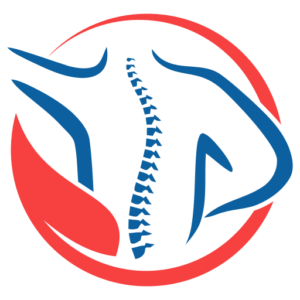Hanging out with Prof. Stuart McGill and his minions a few years back.
We’ve all heard that we need to ‘activate our core’, but what does that actually mean?
Key Points
- There are various interpretations about what your core is
- the deepest ab muscle – the Transverse Abdominus (TA)
- all the trunk muscles (abs and lower back muscles)
- all these muscles plus the diaphragm and pelvic floor muscles
- the intra-abdominal pressure (IAP) created by contraction of all the above muscles
- It’s important to engage your core because delayed firing (especially the TA) is associated with lower back pain (LBP). This has been shown to be a strong predictor of re-occurring LBP.
- The abdominal drawing in method (ADIM) has been the mainstay of Pilates and physical therapy disciplines for almost 2 decades. It focuses on the TA activation and generates much less IAP than other methods.. However, recent evidence suggests that it is not as useful for LBP as once thought.
- McGill’s bracing method generates the most TA contraction. It does this together with all the trunk muscles while maintaining a neutral spine. This can be useful in severe LBP and for sports such as powerlifting where a very stiff lumbar spine can be advantageous. But, it can lead to an over-reliance on conscious bracing for activities (which isn’t always practical).
- Other more functional systems such as FMS/SFMA, DNS and OS that focus on motor control may be more useful. This is especially true for more ‘athletic’ activities (and everyday life) where the ability to flex and extend the lumbar spine and ‘reflexive stability’ is important.
In a bit more detail
So, what is your core?
Some people, although less and less so nowadays, would say the core is simply your Transverse Abdominus (TA) muscle. The TA is the deepest ab muscle – sort of like a weightlifter’s belt between the hips and ribs. Some say the core includes all the major muscles of your abdomen and lower back (rectus abdominus, external & internal obliques, TAs, quadrotor lumborum, multifidi, and erector spinae group). Others say, it includes all these plus your diaphragm and pelvic floor muscles. Lastly, some say, it’s not actually the muscles, rather conceptually it’s the intra-abdominal pressure (IAP) created by contracting all these muscle that stabilises your lumbar spine’.
So, why does it matter?
While not the only cause, delayed firing of the trunk muscles (initially the research was just focused on delayed TA firing) is correlated with lower back pain (LBP), especially sub-acute and chronic LBP. Delayed firing is also a strong predictor of reoccurrence of LBP (Cholewicki et al., 2005; Navalgund et al., 2013).
So, what do we do about it?
And here lies the ‘rub’…
Just as there are many schools of thought on what the core is, there are even more thoughts on how to train it. Because it’s such a large topic, I plan on doing a few blog posts to try and break it down into more manageable pieces.
In part 1, I’m going to describe the methodology of the two biggest players, Hodges and McGill (who also happen to be the most antagonistic toward each other).
Abdominal drawing-in method (ADIM).

In 1998, Hodges and Richardson published a paper demonstrating correlation between lower back pain and delayed firing of the TA. In the following year, they published a book detailing spinal stabilisation exercises using ADIM (Hodges & Richardson, 1998; Richardson et al., 1999).
Essentially, the ADIM teaches you to draw your belly button in towards your spine with the aim of targeting the TA muscle. This became the backbone of many physical therapy exercises.
Pros
- there is more TA firing (electrical excitation of muscle fibres) relative to other abdominal muscles when compared to other types of ‘core’ training (Park & Yu, 2013).
- This means that less intra-abdominal pressure (IAP) is created using this method which can be useful post-abdominal surgery or similar..
Cons
- It’s a skill that’s not always easy to master, and this is especially true if someone has LBP.
- Critics argue that it does not work during dynamic movement. ADIM supporters point to studies shown increased thickening of the TA. Its detractors point to studies demonstrating no difference to lumbar ‘stiffness’ during dynamic movement (Southwell et al., 2016; Teyhen et al., 2005).
The McGill Method – abdominal bracing

The McGill method has the concept of abdominal bracing at its core (no pun intended). McGill demonstrates this with his Big 3 exercises (the side plank, bird dog and 1-legged sit-up). However, in his seminars he uses a variety of exercises and techniques (I’ve even learned variations on McKenzie exercises for the neck during his seminars).
Essentially, the McGill method is about learning to contract all your trunk muscles as a unit while maintaining a neutral spine. Once you can perform the brace, you then maintain it while performing exercises, eg the Big 3.
Pros
- It has been shown to generate more forceful TA contraction (than ADIM) across multiple exercises (Moghadam et al., 2019).
- It is a very robust way of stabilising the spine and works well during dynamic movements especially those that are performed mainly in a single plane (e.g. weightlifting and power lifting).
Cons
- It increases IAP and caution should be exercised initially post pelvic floor injury or post abdominal surgery..
- It is not ‘natural’ and can make people reliant on always bracing. This is not optimal for more athletic pursuits like running, jumping, side-stepping & everyday life.
My thoughts
Our understanding of the TA nowadays is that it is designed to work as a functional unit with all the other trunk stabilisers (not in isolation). Studies also show that the ADIM doesn’t provide ‘stiffness’ to the lumbar spine during flexion. Personally, I see this as ‘deal-breaker’ because it doesn’t translate to getting people back to everyday activities. Yes, you may be able to use it during an exercise in the gym where you keep your trunk perfectly rigid, but even walking requires some amount of lumbar spine flexion – so I don’t see this as practical (or functional).
Studies show TA activation is greater with McGill’s bracing method across a wide range of exercises. Interestingly, the highest TA contraction is achieved when doing a glute bridge (which is why it’s key part of my lower back rehab). For these reasons, I generally favour bracing. But, the ADIM can be useful post surgery because it creates less IAP.
I think McGill is a great starting point for more severe cases of LBP. However, taken to the extreme, it can make people over-reliant on bracing. This may have a negative impact on things like running and gymnastics where an important part of the energy recycling process is lumbar spine flexion & extension. While McGill now talks about bracing ‘just enough’, I find that more functional systems such as FMS/SFMA, DNS and OS achieve these aims better. I will discuss these in my next post.
References
Cholewicki, J., Silfies, S. P., Shah, R. A., Greene, H. S., Reeves, N. P., Alvi, K., & Goldberg, B. (2005). Delayed trunk muscle reflex responses increase the risk of low back injuries. Spine, 30(23), 2614–2620. https://doi.org/10.1097/01.brs.0000188273.27463.bc
Hodges, P. W., & Richardson, C. A. (1998). Delayed postural contraction of transversus abdominis in low back pain associated with movement of the lower limb. Journal of Spinal Disorders, 11(1), 46–56.
Moghadam, N., Ghaffari, M. S., Noormohammadpour, P., Rostami, M., Zarei, M., Moosavi, M., & Kordi, R. (2019). Comparison of the recruitment of transverse abdominis through drawing-in and bracing in different core stability training positions. Journal of Exercise Rehabilitation, 15(6), 819–825. https://doi.org/10.12965/jer.1939064.352
Navalgund, A., Buford, J. A., Briggs, M. S., & Givens, D. L. (2013). Trunk muscle reflex amplitudes increased in patients with subacute, recurrent LBP treated with a 10-week stabilization exercise program. Motor Control, 17(1), 1–17. https://doi.org/10.1123/mcj.17.1.1
Park, S.-D., & Yu, S.-H. (2013). The effects of ADIM and core exercise on abdominal muscle thickness and Oswestry disability index in subjects with chronic low back pain. Journal of Exercise Rehabilitation, 9(2), 286–291. https://doi.org/10.12965/jer.130012
Richardson, C., Hodges, P., & Jull, G. (1999). Therapeutic exercise for spinal segmental stabilization in low back pain : scientific basis and clinical approach. In TA – TT –. Churchill Livingstone Edinburgh. https://doi.org/ LK – https://worldcat.org/title/263648311
Southwell, D. J., Hills, N. F., McLean, L., & Graham, R. B. (2016). The acute effects of targeted abdominal muscle activation training on spine stability and neuromuscular control. Journal of NeuroEngineering and Rehabilitation, 13(1), 1–8. https://doi.org/10.1186/s12984-016-0126-9
Teyhen, D. S., Miltenberger, C. E., Deiters, H. M., Del Toro, Y. M., Pulliam, J. N., Childs, J. D., Boyles, R. E., & Flynn, T. W. (2005). The use of ultrasound imaging of the ADIM in subjects with low back pain. The Journal of Orthopaedic and Sports Physical Therapy, 35(6), 346–355. https://doi.org/10.2519/jospt.2005.35.6.346


